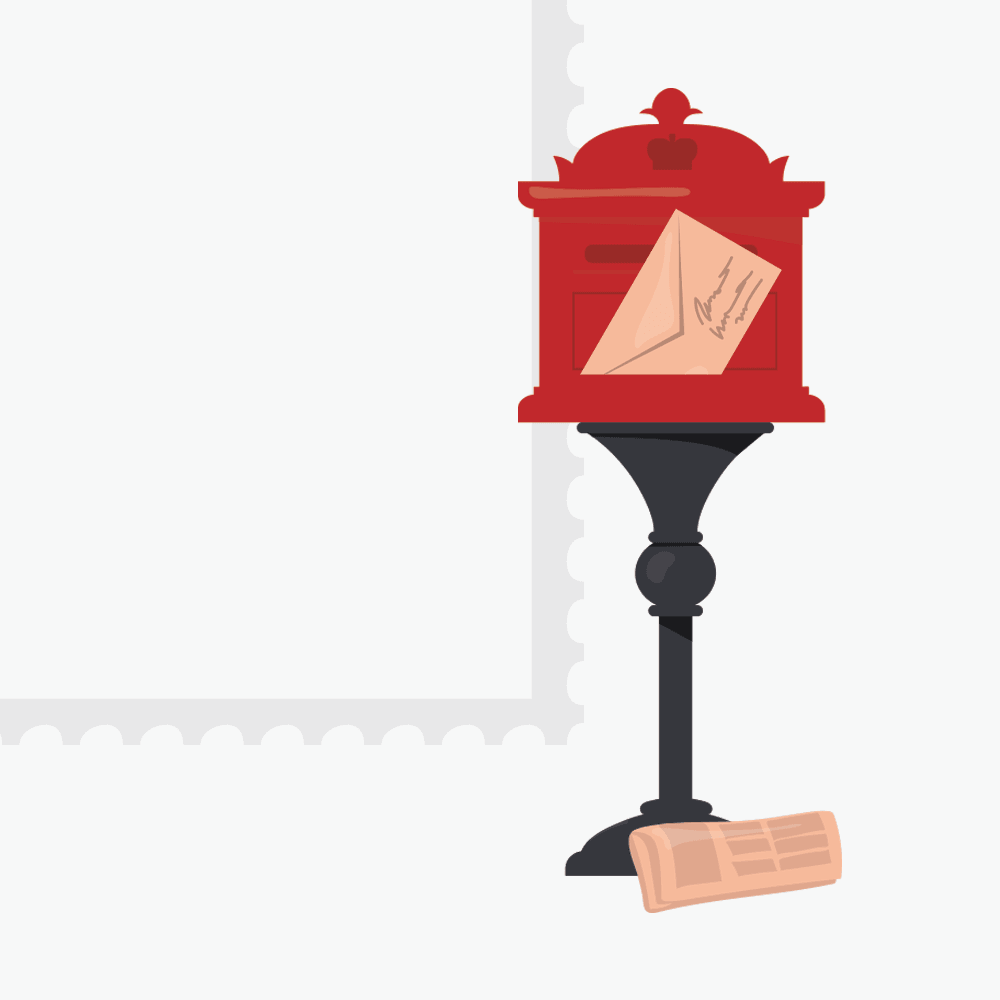When it comes to planning large-scale mailings for your business, estimating the right number of stamps is essential. Whether you’re preparing for a major marketing campaign, sending out invoices, or gearing up for the holiday season, having the right postage amount in place ensures smooth, cost-effective operations and eliminates last-minute scramble.
In this guide, we’ll take you through each step to accurately estimate stamp usage for your next large-scale mailing. By following these tips, you can control costs, streamline processes, and avoid the headaches of under- or over-buying stamps.
1. Identify the purpose and scope of your mailing
Start by defining the purpose of your mailing. Different types of mail require different amounts of postage and preparation:
- Marketing campaigns: Direct mail promotions or product announcements may include brochures, postcards, or catalogs.
- Customer communication: Regular updates, newsletters, or important notices.
- Invoices and billing: Monthly or quarterly statements.
- Seasonal greetings or special events: Holiday cards, thank-you notes, or event invitations.
Each mailing type typically requires different postage, so determine which category yours falls into before you start estimating.
2. Determine your target audience size
The next step is to calculate how many pieces of mail you’ll be sending. Review your mailing lists and determine which segments you’re targeting. For example, if you’re sending a promotion to all clients in your database, the list might be extensive, whereas holiday greetings may only go to key customers and partners.
For businesses conducting direct mail marketing, it’s often best to plan your postage needs in tiers based on audience segments. If you’re doing a mass mailing, like a product catalog, segment the list by geography, customer loyalty, or other factors to refine your estimate.
3. Calculate the weight and size of your mailing pieces
The weight and size of each mail piece will directly impact the number of stamps required. For example:
- Standard letters: One first-class stamp typically covers standard letters up to 100g and within certain size limits.
- Large letters or packages: Heavier or larger items may need additional postage, so check the Royal Mail weight and size guidelines to understand what’s required for oversized items.
Consider whether your mailing will include any extras, such as brochures, inserts, or samples, which might increase weight. To be precise, weigh a sample mail piece with all intended inclusions and check the Royal Mail pricing table.
4. Estimate the frequency of your mailings
If your business conducts recurring mailings, estimating for a single mailing is only part of the equation. You’ll want to project your postage needs over several months or even a year to avoid running low on stamps during peak periods. For example:
- Monthly invoices: Calculate the total stamps needed for all invoices over the year, accounting for potential increases in customer base.
- Quarterly marketing campaigns: If you send out four campaigns annually, plan accordingly based on the expected mailing size for each.
Estimating over time also helps you plan bulk purchases, which can provide savings and ensure you’re well-stocked during busier mailing periods.
5. Plan for peak mailing periods
Certain times of year typically involve heavier mail volumes, such as the holiday season, end-of-financial-year communications, or special promotional events. For these times, you may want to overestimate slightly to cover any unexpected increases in mailing volume.
To prepare for peak seasons, review historical data to gauge trends. If your business has an annual holiday card tradition, look at last year’s mailing numbers to estimate this year’s needs. Accounting for these peak periods ensures you won’t need to buy stamps at premium rates in a last-minute rush.
6. Factor in return mail
Businesses sending mail that requires responses or returned documents, such as reply envelopes for client forms or feedback cards, should account for these as well. Decide if you’ll pre-stamp these return envelopes, and if so, add them to your total estimate.
Including pre-paid return envelopes can improve response rates, especially in surveys and marketing campaigns, but requires extra budgeting. Factor this in to avoid shortages.
7. Choose the right type of stamps for your needs
Royal Mail offers different types of stamps that may align with your brand or mailing type, including standard, themed, and special edition stamps. For businesses that use stamps as part of brand building, bulk-buying themed or special stamps might be ideal.
However, make sure to check the pricing for each type; specialized stamps can be slightly more expensive, so plan accordingly if you’re using them on a large scale.
8. Monitor usage and adjust as needed
After you conduct a large-scale mailing, review the process and see if your estimation was accurate. Were there enough stamps, or did you need to reorder midway? Monitoring postage usage and learning from each mailing will allow you to fine-tune your estimates for future mailings.
Some businesses even use software or spreadsheets to track postage over time. This record-keeping can reveal patterns, such as seasonal spikes or growth in regular mailing volume, which can help in planning bulk purchases more precisely.
Making bulk buying work for your business
Bulk-buying stamps can save your business time and money, especially when you accurately estimate your needs. Having a reliable postage supply on hand reduces stress, streamlines mailing operations, and ensures your team has the resources they need for efficient mailing.
By following these steps to estimate your stamp usage, you can avoid under- or over-buying, keep postage costs in check, and ensure your mailings go out without a hitch. With the right planning, large-scale mailings become a smooth, manageable process that supports your business objectives.


How bulk-buying Royal Mail stamps can save your business money